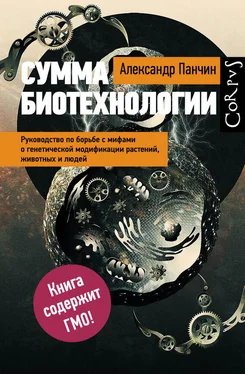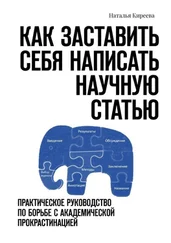183. Sakamoto Y. et al.: A 52-week feeding study of genetically modified soybeans in F344 rats. Shokuhin Eiseigaku Zasshi 2007, 48(3):41–50.
184. Sakamoto Y. et al.: A 104-week feeding study of genetically modified soybeans in F344 rats. Shokuhin Eiseigaku Zasshi 2008, 49(4):272–82.
185. Singh M.B., Bhalla P.L.: Genetic engineering for removing food allergens from plants. Trends Plant Sci 2008, 13(6):257–60.
186. Riascos J.J. et al.: Hypoallergenic legume crops and food allergy: factors affecting feasibility and risk. J Agric Food Chem 2010, 58(1):20–7.
187. Wakasa Y. et al.: Oral immunotherapy with transgenic rice seed containing destructed Japanese cedar pollen allergens, Cry j 1 and Cry j 2, against Japanese cedar pollinosis. Plant Biotechnol J 2013, 11(1):66–76.
188. Takaiwa F., Yang L.: Development of a rice-based peptide vaccine for Japanese cedar and cypress pollen allergies. Transgenic Res 2014, 23(4):573–84.
189. Marshall A.: GM soybeans and health safety – a controversy reexamined. Nat Biotechnol 2007, 25(9):981–7.
190. Zhu Y. et al.: Nutritional assessment and fate of DNA of soybean meal from roundup ready or conventional soybeans using rats. Arch Anim Nutr 2004, 58(4):295–310.
191. Hammond B.G. et al.: The feeding value of soybeans fed to rats, chickens, catfish and dairy cattle is not altered by genetic incorporation of glyphosate tolerance. J Nutr 1996, 126(3):717–27.
192. Brake D.G., Evenson D.P.: A generational study of glyphosate-tolerant soybeans on mouse fetal, postnatal, pubertal and adult testicular development. Food Chem Toxicol 2004, 42(1):29–36.
193. Liener I.E.: The intraperitoneal toxicity of concentrates of the soy bean trypsin inhibitor. J Biol Chem 1951, 193(1):183–91.
194. Gumbmann M.R. et al.: Pancreatic response in rats and mice to trypsin inhibitors from soy and potato after short– and long-term dietary exposure. J Nutr 1989, 119(11):1598–609.
195. European Comission: A decade of EU-funded GMO
research. http://eceuropaeu/research/biosociety/pdf/a_decade_of_eu-funded_gmo_researchpdf 2010
196. Shaw K. et al.: Tryptophan and 5-hydroxytryptophan for depression. Cochrane Database Syst Rev 2002(1):CD003198.
197. Slutsker L. et al.: Eosinophilia-myalgia syndrome associated with exposure to tryptophan from a single manufacturer. JAMA 1990, 264(2):213–7.
198. Scientific Opinion on the safety and efficacy of L-tryptophan produced by Escherichia coli CGMCC 7.59 for all animal species based on a dossier submitted by HELM AG on behalf of Meihua Holdings Co. Ltd. EFSA Journal 2015, 13(2):4015.
199. Savely V.R. et al.: The mystery of Morgellons disease: infection or delusion? Am J Clin Dermatol 2006, 7(1):1–5.
200. Pearson M.L. et al.: Clinical, epidemiologic, histopathologic and molecular features of an unexplained dermopathy. PLOS ONE 2012, 7(1):e29908.
201. Middelveen M.J. et al.: Characterization and evolution of dermal filaments from patients with Morgellons disease. Clin Cosmet Investig Dermatol 2013, 6:1–21.
202. Gruzza M. et al.: Gene transfer from engineered Lactococcus lactis strains to Enterococcus faecalis in the digestive tract of gnotobiotic mice. Microb Releases 1993, 2(3):121–5.
203. Netherwood T. et al.: Gene transfer in the gastrointestinal tract. Appl Environ Microbiol 1999, 65(11):5139–41.
204. Schubbert R. et al.: Ingested foreign (phage M13) DNA survives transiently in the gastrointestinal tract and enters the bloodstream of mice. Mol Gen Genet 1994, 242(5):495–504.
205. Schubbert R. et al.: Foreign (M13) DNA ingested by mice reaches peripheral leukocytes, spleen, and liver via the intestinal wall mucosa and can be covalently linked to mouse DNA. Proc Natl Acad Sci U S A 1997, 94(3):961–6.
206. Schubbert R. et al.: On the fate of orally ingested foreign DNA in mice: chromosomal association and placental transmission to the fetus. Mol Gen Genet 1998, 259(6):569–76.
207. Hohlweg U., Doerfler W.: On the fate of plant or other foreign genes upon the uptake in food or after intramuscular injection in mice. Mol Genet Genomics 2001, 265(2): 225–33.
208. Panchin A.Y. et al.: Human trash ESTs – sequences from cDNA collection that are not aligned to genome assembly. J Bioinform Comput Biol 2008, 6(4):759–73.
209. Folmer J.D. et al.: Utilization of Bt corn residues by grazing beef steers and Bt corn silage and grain by growing beef cattle and lactating dairy cows. J Anim Sci 2002, 80(5):1352–61.
210. Llorente B. et al.: Improvement of aroma in transgenic potato as a consequence of impairing tuber browning. PLOS ONE 2010, 5(11):e14030.
211. Davidovich-Rikanati R. et al.: Enrichment of tomato flavor by diversion of the early plastidial terpenoid pathway. Nat Biotechnol 2007, 25(8):899–901.
212. Jian L. et al.: Tea and lycopene protect against prostate cancer.Asia Pac J Clin Nutr 2007, 16 Suppl 1:453–7.
213. http://www.youtube.com/watch?v=QzS0DX0Vx8Y
214. Gill S.S. et al.: The mode of action of Bacillus thuringiensis endotoxins. Annual Rev Entomol 1992, 37:615–36.
215. Losey J.E. et al.: Transgenic pollen harms monarch larvae. Nature 1999, 399(6733):214.
216. Sears M.K. et al.: Impact of Bt corn pollen on monarch butterfly populations: a risk assessment. Proc Natl Acad Sci USA 2001, 98(21):11937–42.
217. Gatehouse A.M. et al.: The case of the monarch butterfly: a verdict is returned. Trends Genet 2002, 18(5):249–51.
218. Rosi-Marshall E.J. et al.: Toxins in transgenic crop byproducts may affect headwater stream ecosystems. Proc Natl Acad Sci USA 2007, 104(41):16204–8.
219. Chambers C.P. et al.: Responses of stream macroinvertebrates to Bt maize leaf detritus. Ecol Appl 2010, 20(7):1949–60.
220. Guo Y. et al.: The Cultivation of Bt Corn Producing Cry1Ac Toxins Does Not Adversely Affect Non-Target Arthropods. PLOS ONE 2014, 9(12):e114228.
221. Duan J.J. et al.: A meta-analysis of effects of Bt crops on honey bees (Hymenoptera: Apidae). PLOS ONE 2008, 3(1):e1415.
222. Lemaux P.G.: Genetically engineered plants and foods: a scientist’s analysis of the issues (part II). Annual Rev Plant Biol 2009, 60:511–59.
223. Gill R.J. et al.: Combined pesticide exposure severely affects individual– and colony-level traits in bees. Nature 2012, 491(7422):105–8.
224. Carpenter J.E.: Peer-reviewed surveys indicate positive impact of commercialized GM crops. Nat Biotechnol 2010, 28(4):319–21.
225. GruÈre G. et al.: Bt Cotton and Farmer Suicides in India: Reviewing the Evidence. IFPRI Discussion Paper 00808 2008.
226. Sheridan C.: Doubts surround link between Bt cotton failure and farmer suicide. Nat Biotechnol 2009, 27(1):9–10.
227. Kathage J., Qaim M.: Economic impacts and impact dynamics of Bt (Bacillus thuringiensis) cotton in India. Proc Natl Acad Sci USA 2012, 109(29):11652–6.
228. Bradberry S.M. et al.: Glyphosate poisoning. Toxicol Rev 2004, 23(3):159–67.
229. Sribanditmongkol P. et al.: Pathological and toxicological findings in glyphosate-surfactant herbicide fatality: a case report. Am J Forensic Med Pathol 2012, 33(3):234–7.
230. Schinasi L., Leon M.E.: Non-Hodgkin lymphoma and occupational exposure to agricultural pesticide chemical groups and active ingredients: a systematic review and meta-analysis. Int J Environ Res Public Health 2014, 11(4):4449–527.
231. Mink P.J. et al.: Epidemiologic studies of glyphosate and cancer: a review. Regul Toxicol Pharmacol 2012, 63(3):440–52.
232. Mink P.J. et al.: Epidemiologic studies of glyphosate and noncancer health outcomes: a review. Regul Toxicol Pharmacol 2011, 61(2):172–84.
233. Williams A.L. et al.: Developmental and reproductive outcomes in humans and animals after glyphosate exposure: a critical analysis. J Toxicol Environ Health B Crit Rev 2012, 15(1):39–96.
Читать дальше
Конец ознакомительного отрывка
Купить книгу




![Александр Панчин - Гарвардский Некромант [litres]](/books/390749/aleksandr-panchin-garvardskij-nekromant-litres-thumb.webp)


![Александр Панчин - Апофения [litres]](/books/435337/aleksandr-panchin-apofeniya-litres-thumb.webp)




